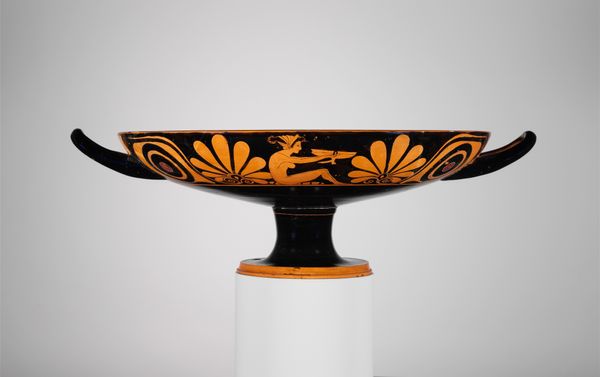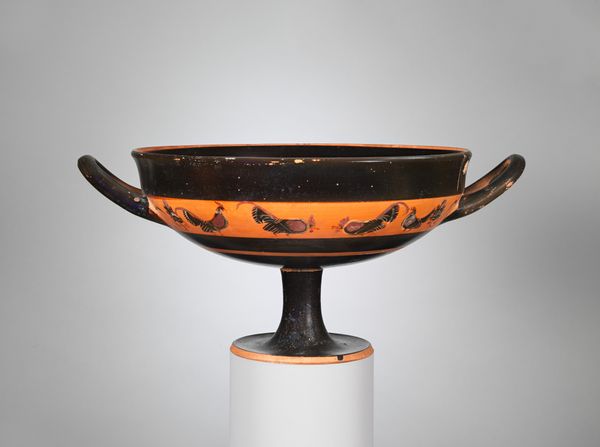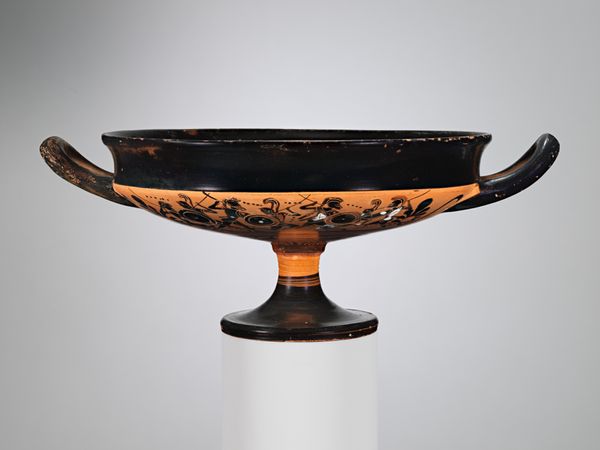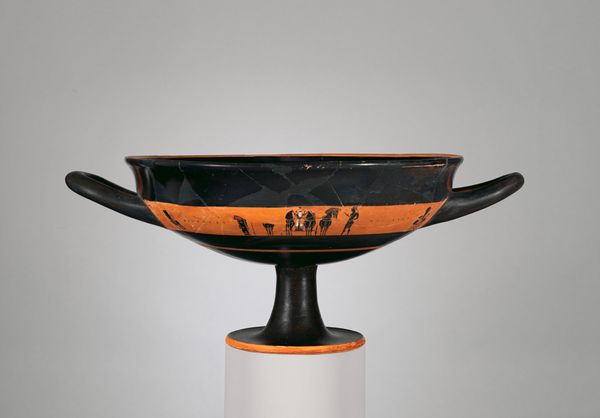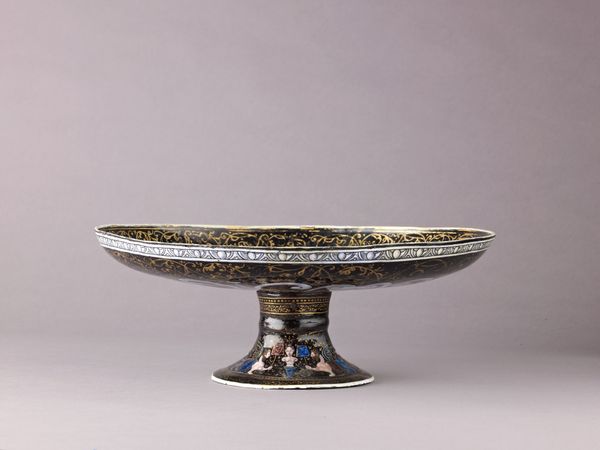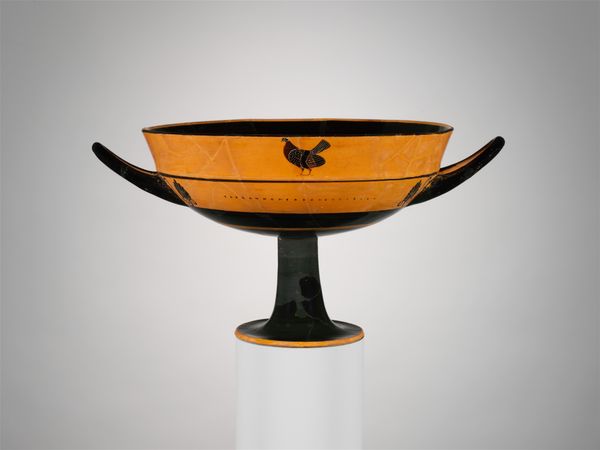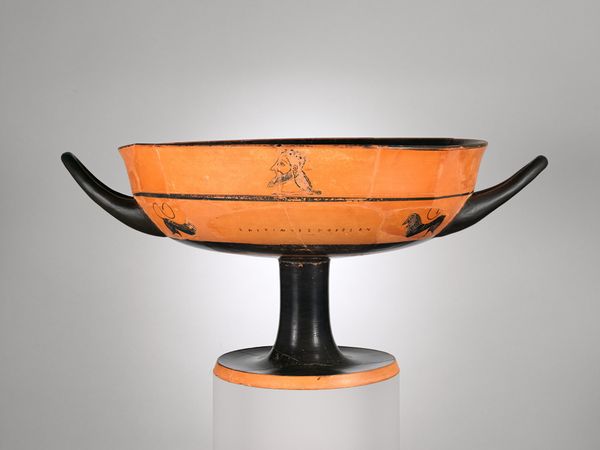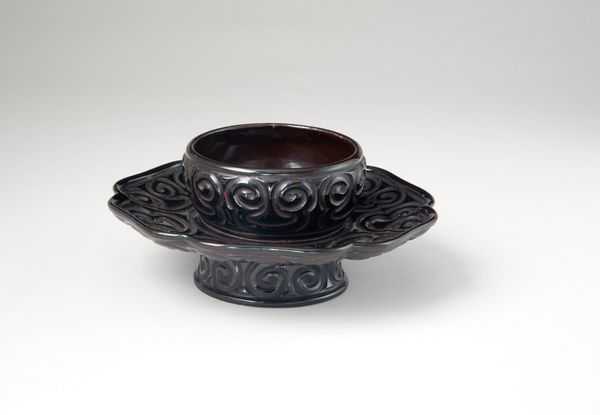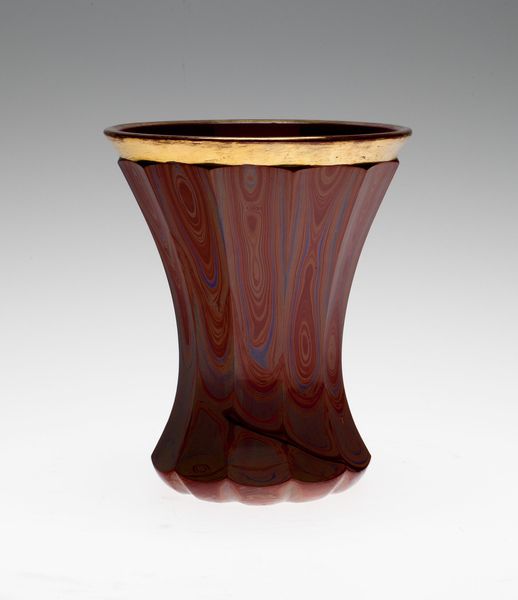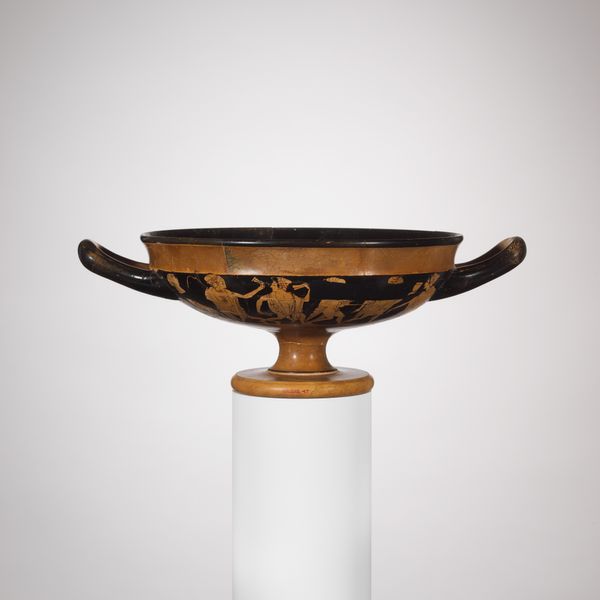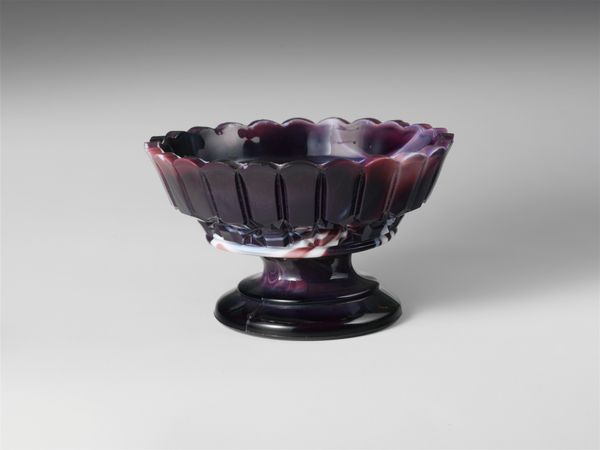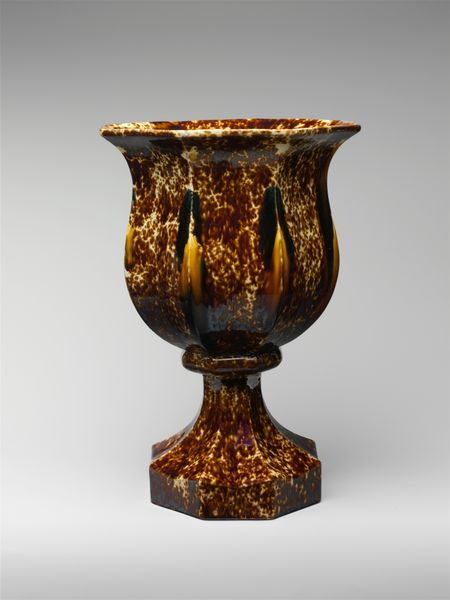
ceramic
#
greek-and-roman-art
#
landscape
#
ceramic
#
vase
#
figuration
#
roman-art
#
ancient-mediterranean
Dimensions: H. 5 in. (12.7 cm) diameter 12 3/8 in. (31.5 cm)
Copyright: Public Domain
Editor: Here we have a terracotta kylix, a drinking cup crafted around 520 BC, and attributed to Psiax. What strikes me is how contemporary it feels, this striking black and orange design and this mythical winged horse floating along the rim... how would you interpret this piece? Curator: This kylix offers a fascinating window into the social world of ancient Greece. Drinking cups like these weren't just functional; they were central to symposia – elite gatherings focused on drinking, conversation, and entertainment. Consider the imagery: the Pegasus, surely tied to status. The owner may want to align their family with mythological lineage to gain and hold power within society. Editor: So, you're saying this wasn't simply a vessel, but a symbol of social standing? How would a piece like this function to convey that kind of messaging in ancient greek culture? Curator: Absolutely. Imagine the visual impact. As the cup was drained, interior scenes would slowly reveal themselves, sparking conversation, even debate. Red-figure pottery, a fairly new style, elevated craftsmanship through carefully constructed imagery to reinforce shared values or provoke intellectual stimulation, within that societal context. These are statements. How does its display in a museum today impact your understanding? Editor: That’s fascinating! I suppose seeing it behind glass changes the context entirely. It's preserved, static, where it would've been interactive in its time, which sort of reframes its function. Thanks for shining a light on its possible life! Curator: Indeed. Understanding the intended use transforms our appreciation. Thinking about its place in ancient society illuminates so much more than aesthetic qualities alone.
Comments
No comments
Be the first to comment and join the conversation on the ultimate creative platform.
